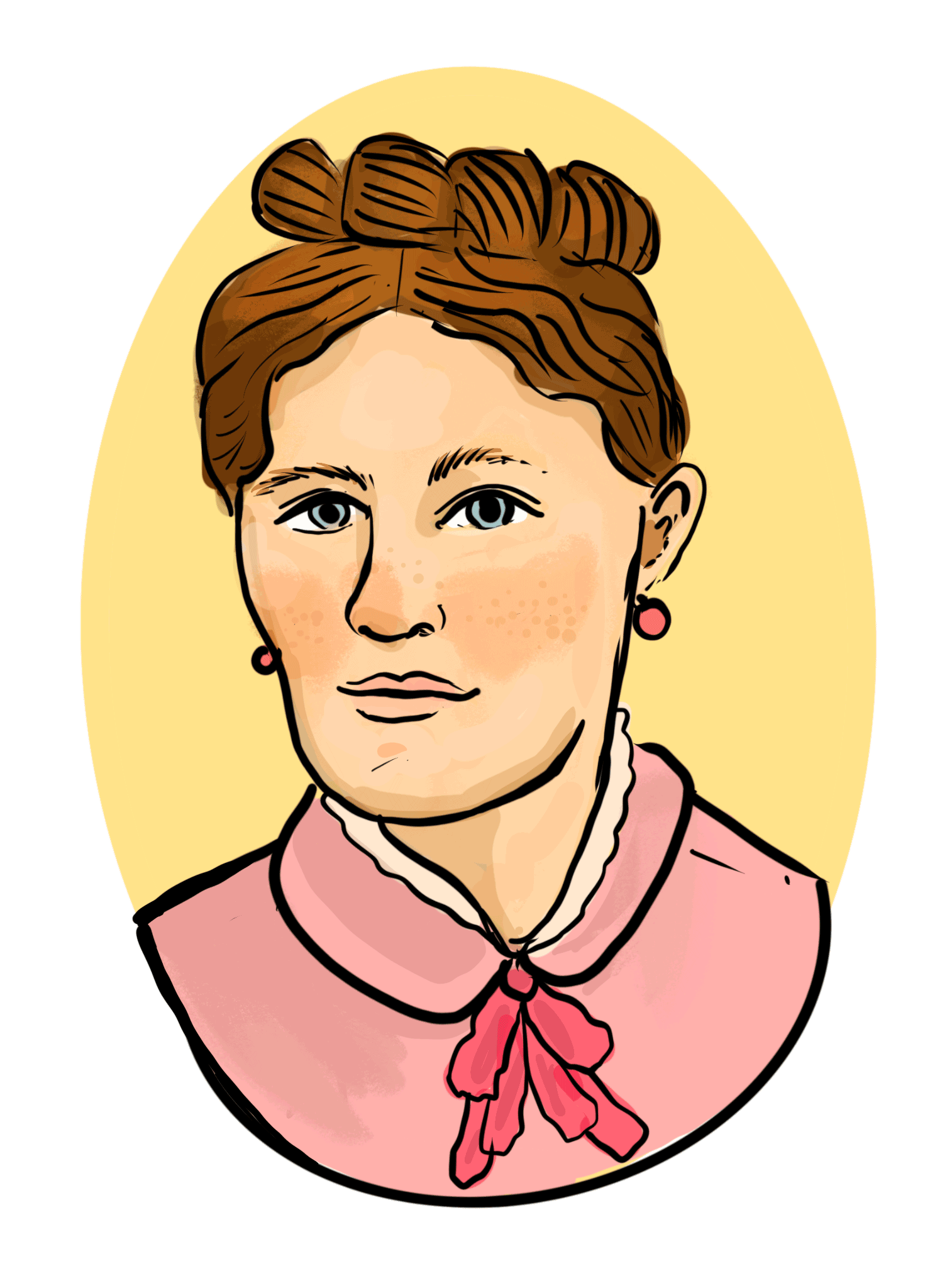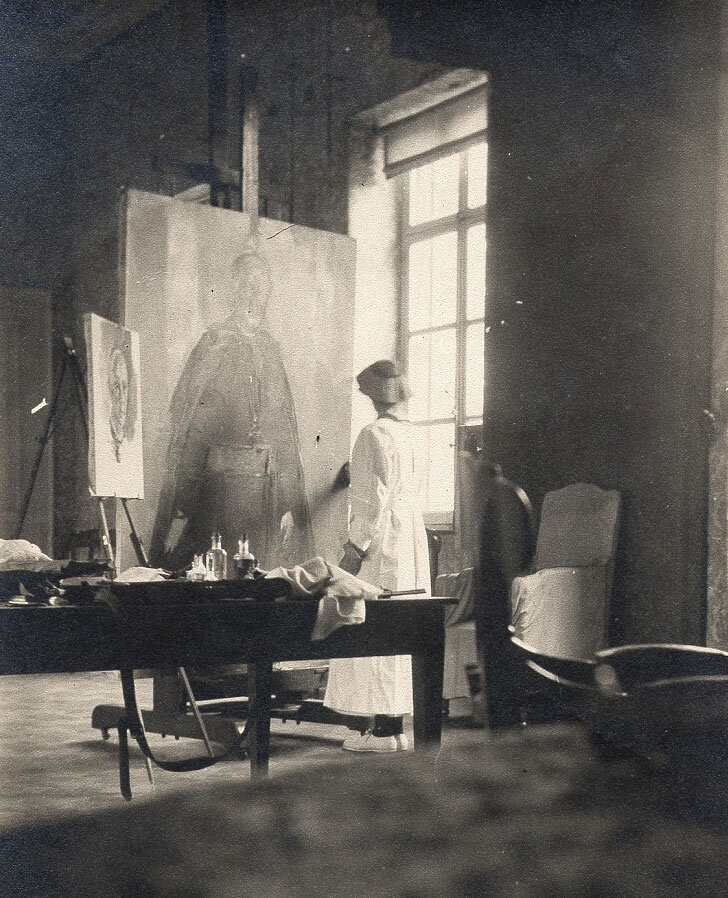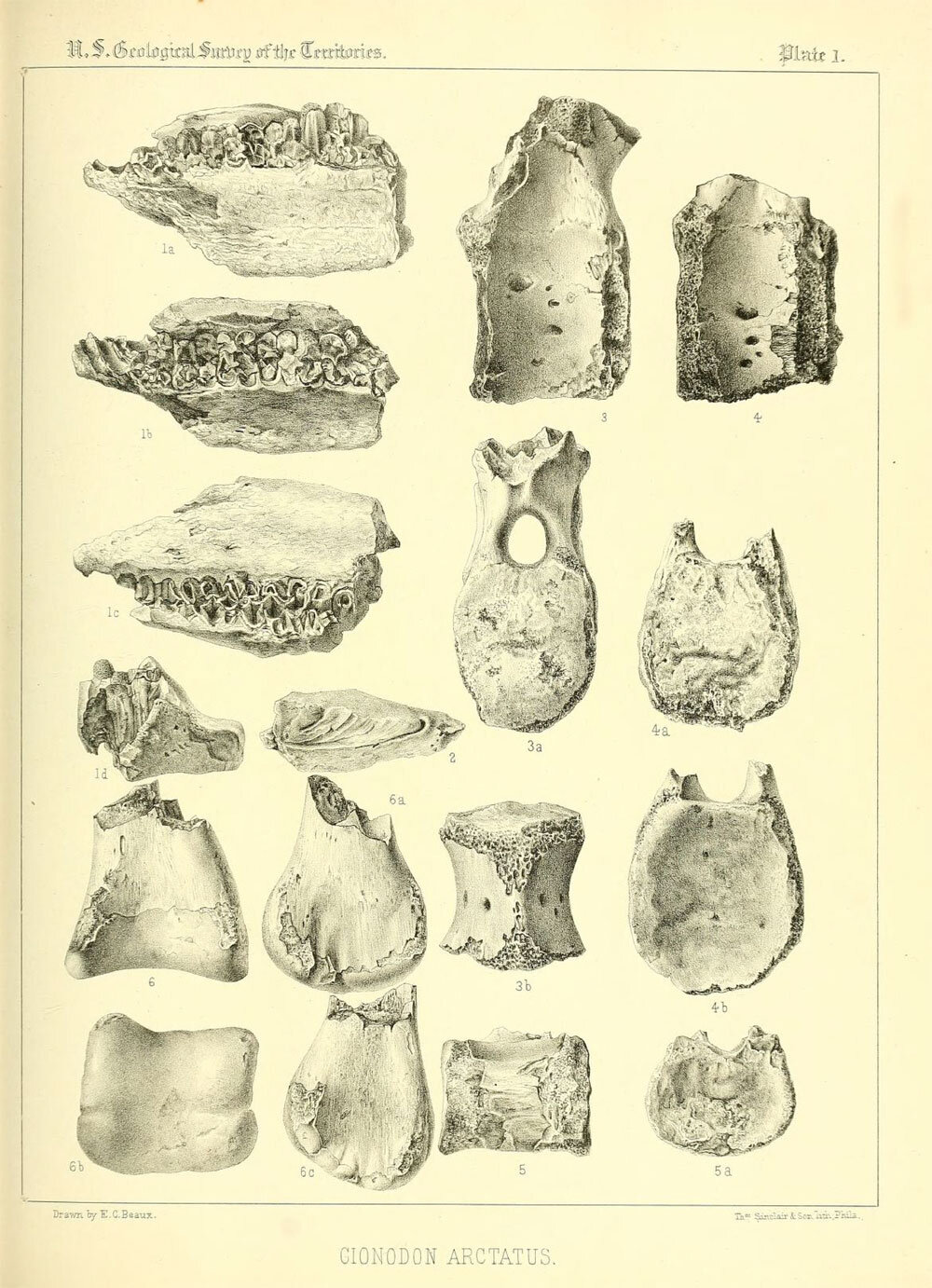Cecilia Beaux
Cecilia Beaux
Cecilia Beaux
1855–1942
Eliza Cecilia Beaux was a science illustrator, lithographer, and famous painter. In her lifetime, she earned many awards for her expressive portraits. She was also the first woman to teach full-time at the Philadelphia Academy for the Fine Arts.
“It was not possible to realize at the time what an immense educational opportunity the stone, to a beginner in art, and the fossils, had offered, and which luckily I had the sense, or rather the intuition, to take advantage of.”
– Cecilia Beaux (1930) Background with figures: Autobiography of Cecilia Beaux
Photograph of Cecilia at about age 16, 1871. Source: Archives of American Art, Smithsonian Institution.
Cecilia was born in Philadelphia. Her mother died shortly after giving birth, and her grief-stricken father left for France, his home country. Although their father later returned to the United States for a time, Celicia (“Leilie”) and her older sister Aimée (“Etta”) were mostly raised by their mother’s relatives.
Cecilia always had a deep interest in art. As a teenager, she took lessons from artists Francis Adolf Van der Wielen and Catherine Ann Drinker. Catherine inspired Cecilia to pursue art as a career, and they became friends. Cecilia became a drawing teacher at Ms. Sanford’s School when she was 18, and she took on private students as well.
Cecilia later moved on to lithography, a process of printing images using greasy pigments on a polished stone surface. She produced a few successful drawings for lithographs printed by Thomas Sinclair & Sons in Philadelphia. Cecilia’s success drew attention from paleontologist Edward Drinker Cope, a distant relative. She described how she made her first drawings of fossils for him:
“. . . the next consignment was a group of small fossils. Carefully arranged, the plate would hold nine of these. They were palaeontological specimens, fragments of bone, some of the partially embedded in the rock and cut away to display integral parts. Photography would not have been sufficient for a good deal of the work Mr. S. [Mr. Sinclair] gave me to do. If successful, the plates were to be included in the Report of a Geological Survey of many volumes. I was expected to define and develop the fossils, making the forms more clear and accenting special parts.”
— Cecilia Beaux (1930) Background with figures: Autobiography of Cecilia Beaux
Edward Cope gave Cecilia more fossils to draw. She drew ”the head of an extinct ass” as well as “the skull of a small camel.” She described one of her meetings with Cope, in which he noticed an inaccuracy in her drawing of the camel skull:
“Dr. Cope came out to see it as before, when there were still possibilities of change or accent. He sat down before the stone, and, after a short examination, pointed to a bony formation I had ‘found’ or though I saw evidence of.
‘What’s this?’ he asked, and when I explained it, he laughed and said, ‘Well, Miss Beaux, if you can invent them, what need is there of going way out West to find these specimens?’”
— Cecilia Beaux (1930) Background with figures: Autobiography of Cecilia Beaux
It is unclear how many drawings Cecilia ultimately produced for Edward Cope. Only one published page of fossil specimens in Vertebrata of the Cretaceous Formations of the West bears Cecilia’s name. It should be noted, however, that most plates in that book do not bear an artist’s name or signature. Cecilia undoubtedly made additional published illustrations that bear only the name of the lithographer, Thomas Sinclair & Sons.
Illustrations of fossil bones by Cecilia, 1875. The bones are from Cionodon arctatus, a poorly known dinosaur. Cecilia's name is in the lower left, and the lithographer's name (Thomas Sinclair & Sons) is in the lower right. Source: Cope (1875) The Vertebrata of the Cretaceous Formations of the West (Biodiversity Heritage Library).
Cecilia was paid reasonably well for her work. Nevertheless, she did not enjoy it. She even wrote a poem to express her dissatisfaction. It says in part:
“Lost hope, lost courage, lost ambition,
What’s left but shams of these to hide my true condition?
Feigned peace and joy, feigned happy effort,
False tongue, proclaiming, ‘Art’s my comfort.’
Nought’s left but bones, and stones and duty that’s not pleasure,
But grinding, ceaseless toil, whose end’s the measure
Of the short web of life the Fates have spun me.”
— Cecilia Beaux (1930) Background with figures: Autobiography of Cecilia Beaux
Cecilia later became a famous painter. She exhibited her work around the world and became popular among wealthy Americans. Critics described her work as “virile” and “strong,” comparing her canvases to those of John Singer Sargent. Demand for her work grew, and she became one of the most successful painters of her time. She published her autobiography, Background with Figures, in 1930.
Cecilia won many awards for her work, including the National Academy for Design’s Saltus Medal for Merit. She earned gold medals from The American Academy of Arts and Letters, the Art Institute of Chicago, and the Carnegie Art Institute, among others. Today, Cecilia’s portraits hang in the Metropolitan Museum of Art, National Museum of American Art, Philadelphia Museum of Art, Musée d’Orsay, and many other institutions.
Cecilia died in 1942. Her ashes were buried at West Laurel Hill Cemetery, Bala-Cynwyd, Pennsylvania.
Paintings by Cecilia
Selected portraits by Cecilia are shown below. (Note: This is a gallery. You can click on each painting to see an enlarged image with complete caption.)
Works illustrated by Cecilia Beaux
Cope, E.D. 1875. The vertebrata of the Cretaceous Formations of the West. Report of the United States Geological Survey of the Territories vol. 2. Government Printing Office, Washington. Link
Selected works by Cecilia Beaux
Beaux, C. 1930. Background with figures: Autobiography of Cecilia Beaux. Houghton Mifflin Company, Boston and New York. Link
Biographical references & further reading
Aldrich, M. 1982. Women in paleontology in the United States, 1840–1960. Earth Sciences History 1: 14–22. Link
Berta, A., and S. Turner. 2020. Rebels, scholars, explorers: Women in vertebrate paleontology. Johns Hopkins University Press.
Carter, A.A. 2005. Cecilia Beaux: A Modern Painter in the Gilded Age. New York: Rizzoli International Publications, Inc.
Fine Arts Museums of San Francisco, Collections. Cecilia Beaux. Link
National Academy of Design. No date. Cecilia Beaux. National Academician Database. Link
Richard, P. 1995. Cecilia Beaux: Portraits of Success. The Washington Post, 8 October 1995. Link
Tappert, T.L. 1994. Out of the background: Cecilia Beaux and the art of portraiture. Reprinted online 2009. Traditional Fine Arts Organization, Inc. Link
Tappert, T. 1996. Artistic ambitions: Cecilia Beaux in Philadelphia. Pennsylvania Heritage, Winter 1996. Link
Tappert, T.L. 2000. Aimee Ernesta and Eliza Cecilia: Two sisters, two choices. The Pennsylvania Magazine of History and Biography 124: 249–291. Link
Turner, S., C.V. Burek, and R.T. Moody. 2010. Forgotten women in an extinct saurian (man’s) world. In R.T.J. Moody, E. Buffetaut, D. Naish, and D.M. Martill, eds. Dinosaurs and other extinct saurians: A historical perspective. Geological Society, London, Special Publications 343: 111–153. Link










